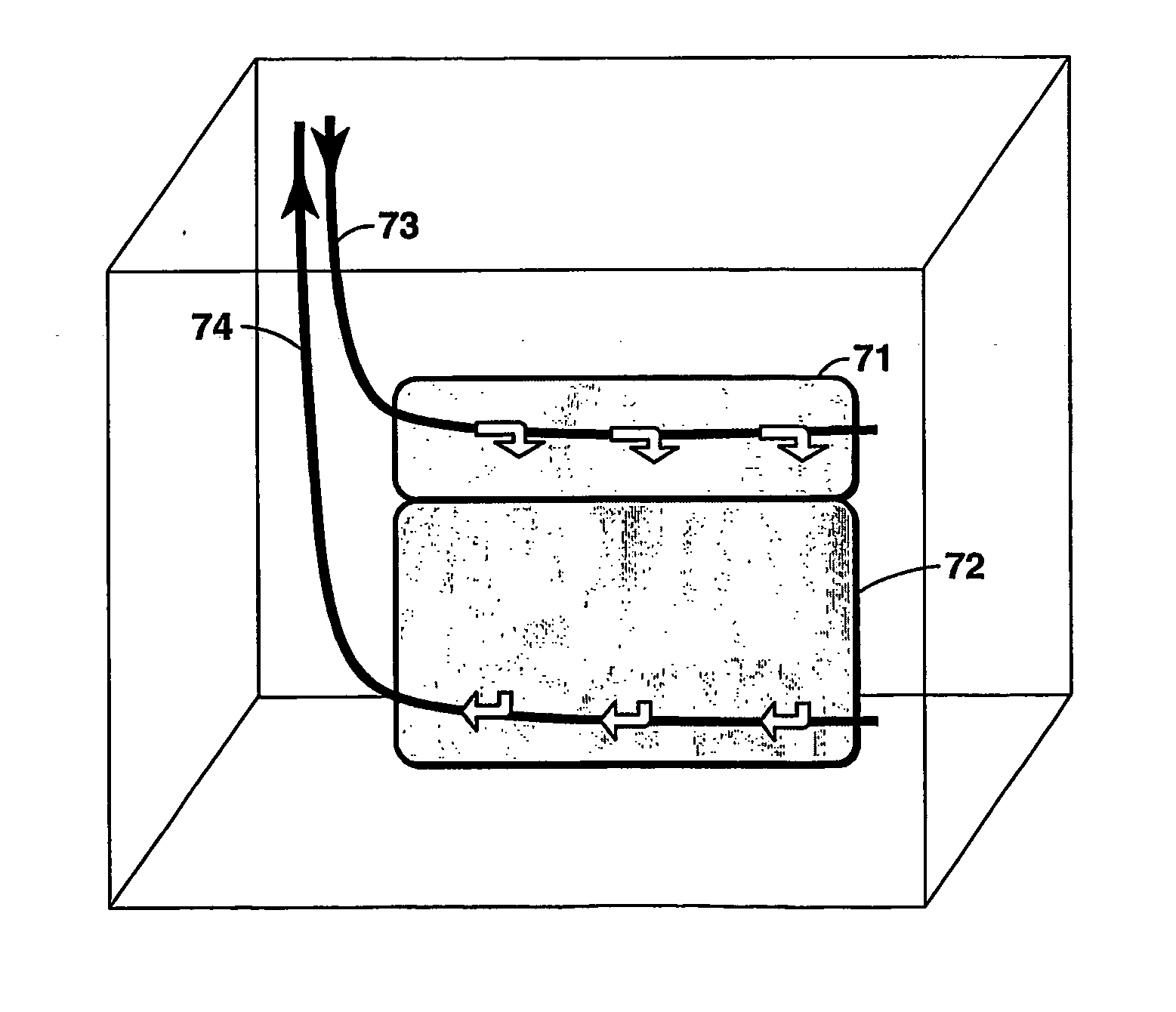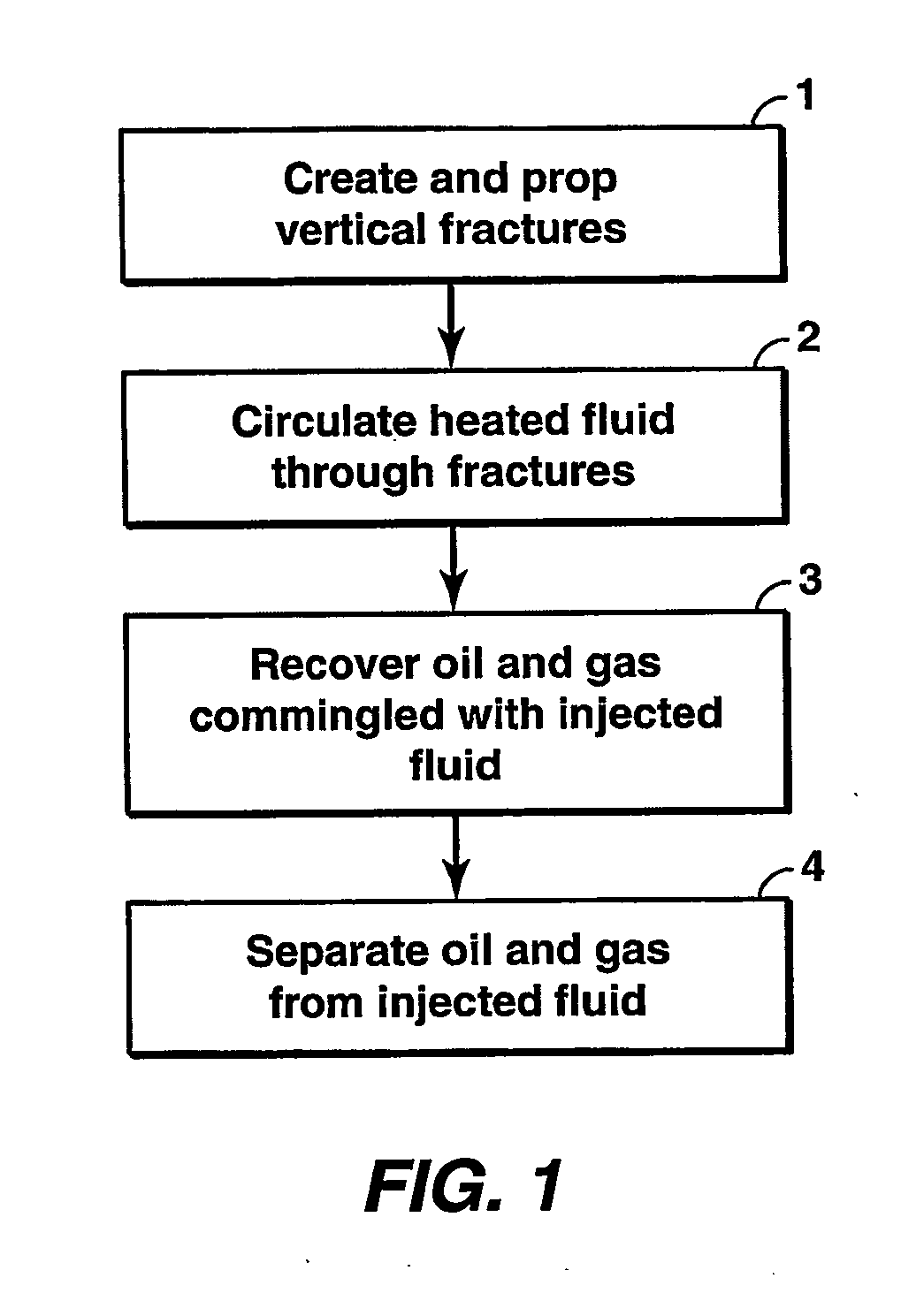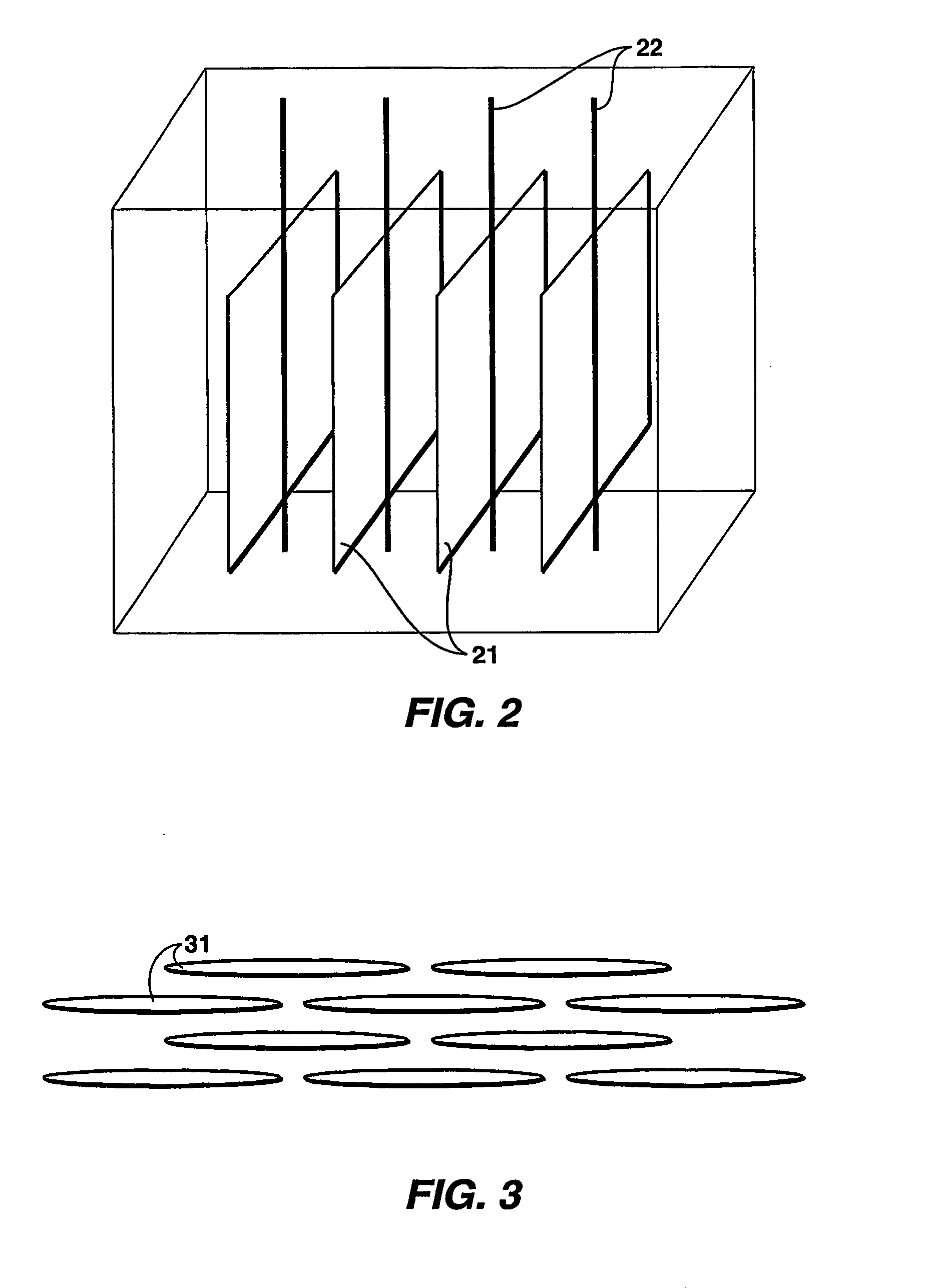Hydrocarbon recovery from impermeable oil shales
a technology of impermeable oil and hydrocarbons, applied in the direction of fluid removal, insulation, borehole/well accessories, etc., can solve the problems of high cost of shale waste management, high cost of mining and surface retorts, and methods that never proved competitive with open-market oil. , to achieve the effect of low permeability
- Summary
- Abstract
- Description
- Claims
- Application Information
AI Technical Summary
Benefits of technology
Problems solved by technology
Method used
Image
Examples
Embodiment Construction
[0027] The present invention is an in situ method for generating and recovering oil and gas from a deep-lying, impermeable formation containing immobile hydrocarbons such as, but not limited to, oil shale. The formation is initially evaluated and determined to be essentially impermeable so as to prevent loss of heating fluid to the formation and to protect against possible contamination of neighboring aquifers. The invention involves the in situ maturation of oil shales or other immobile hydrocarbon sources using the injection of hot (approximate temperature range upon entry into the fractures of 260-370° C. in some embodiments of the present invention) liquids or vapors circulated through tightly spaced (10-60 m, more or less) parallel propped vertical fractures. The injected heating fluid in some embodiments of the invention is primarily supercritical “naphtha” obtained as a separator / distillate cut from the production. Typically, this fluid will have an average molecular weight o...
PUM
 Login to View More
Login to View More Abstract
Description
Claims
Application Information
 Login to View More
Login to View More - R&D
- Intellectual Property
- Life Sciences
- Materials
- Tech Scout
- Unparalleled Data Quality
- Higher Quality Content
- 60% Fewer Hallucinations
Browse by: Latest US Patents, China's latest patents, Technical Efficacy Thesaurus, Application Domain, Technology Topic, Popular Technical Reports.
© 2025 PatSnap. All rights reserved.Legal|Privacy policy|Modern Slavery Act Transparency Statement|Sitemap|About US| Contact US: help@patsnap.com



